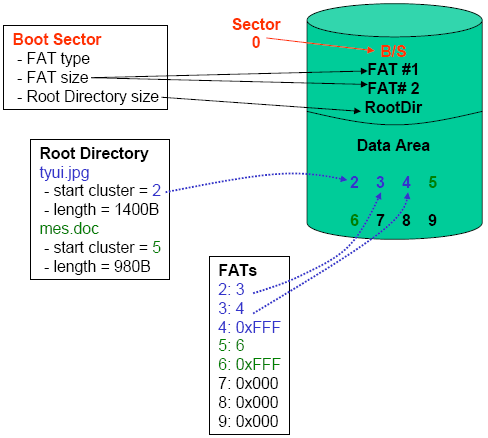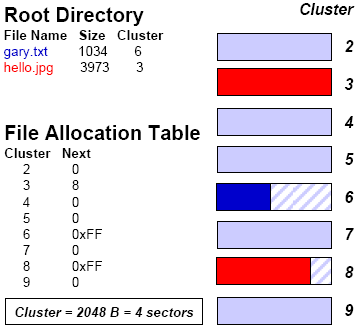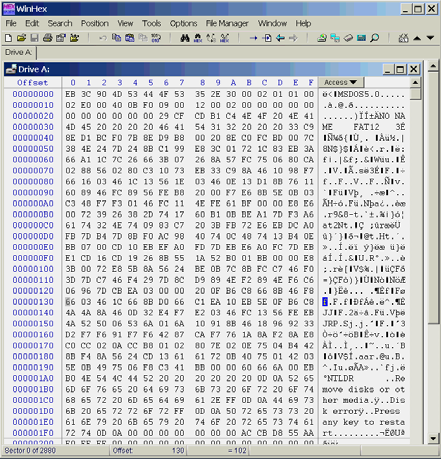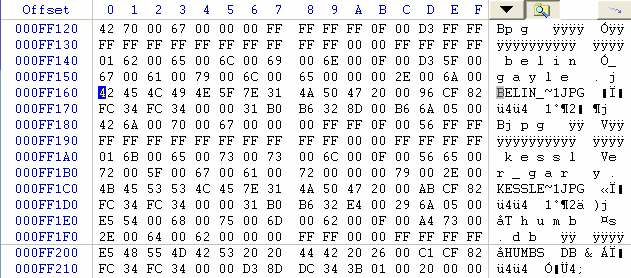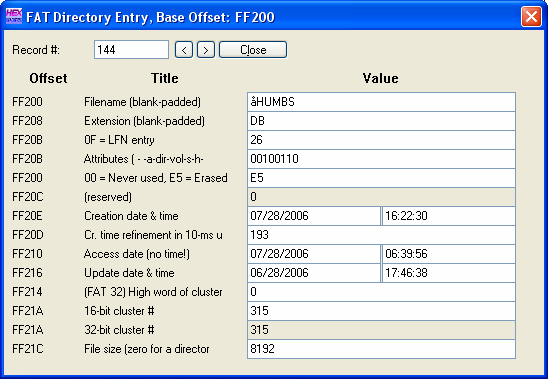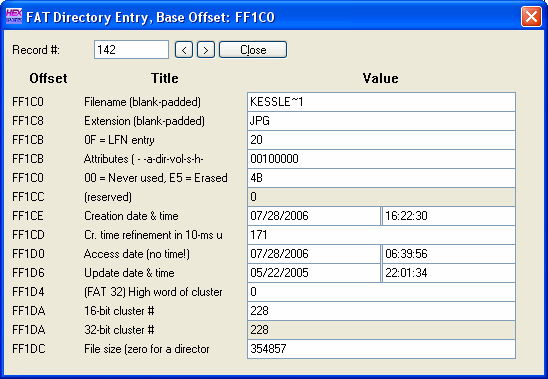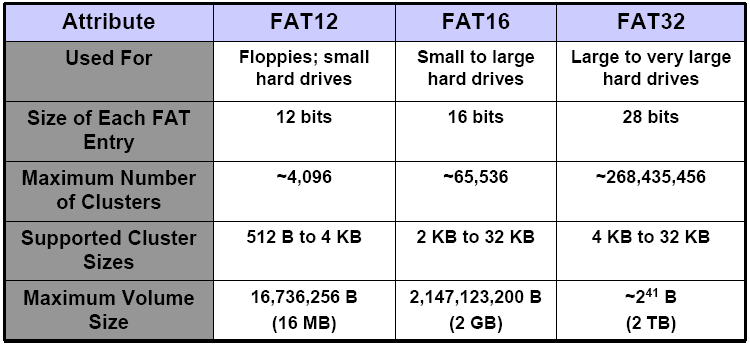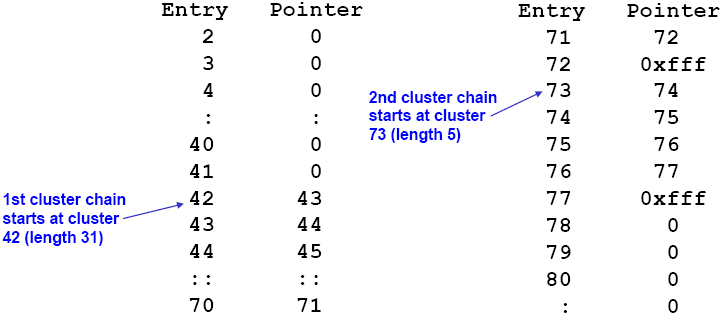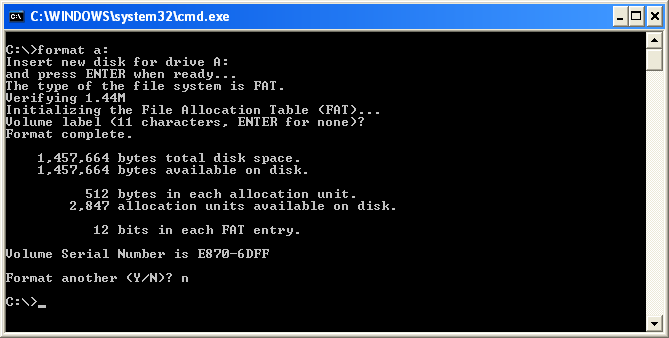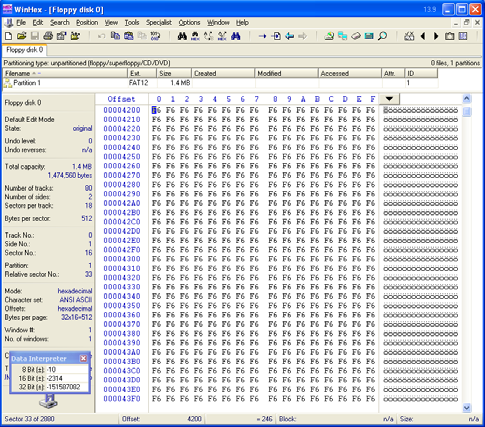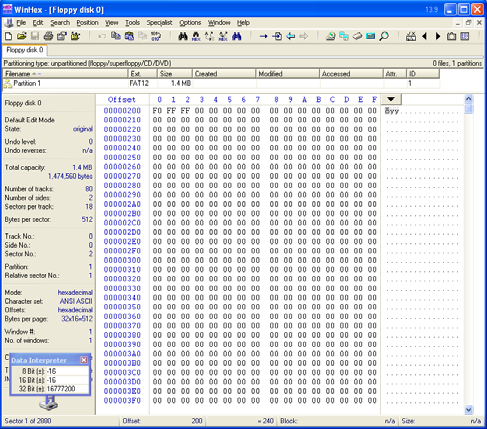|
Bytes
|
Purpose
|
|
0-2
|
Assembly code instructions to jump to boot code (mandatory in bootable partition)
|
|
3-10
|
OEM name in ASCII
|
|
11-12
|
Bytes per sector (512, 1024, 2048, or 4096)
|
|
13
|
Sectors per cluster (Must be a power of 2 and cluster size must be <=32 KB)
|
|
14-15
|
Size of reserved area, in sectors
|
|
16
|
Number of FATs (usually 2)
|
|
17-18
|
Maximum number of files in the root directory (FAT12/16; 0 for FAT32)
|
|
19-20
|
Number of sectors in the file system; if 2 B is not large enough, set to 0 and use
4 B value in bytes 32-35 below
|
|
21
|
Media type (0xf0=removable disk, 0xf8=fixed disk)
|
|
22-23
|
Size of each FAT, in sectors, for FAT12/16; 0 for FAT32
|
|
24-25
|
Sectors per track in storage device
|
|
26-27
|
Number of heads in storage device
|
|
28-31
|
Number of sectors before the start partition
|
|
32-35
|
Number of sectors in the file system; this field will be 0 if the 2B field above
(bytes 19-20) is non-zero
|
